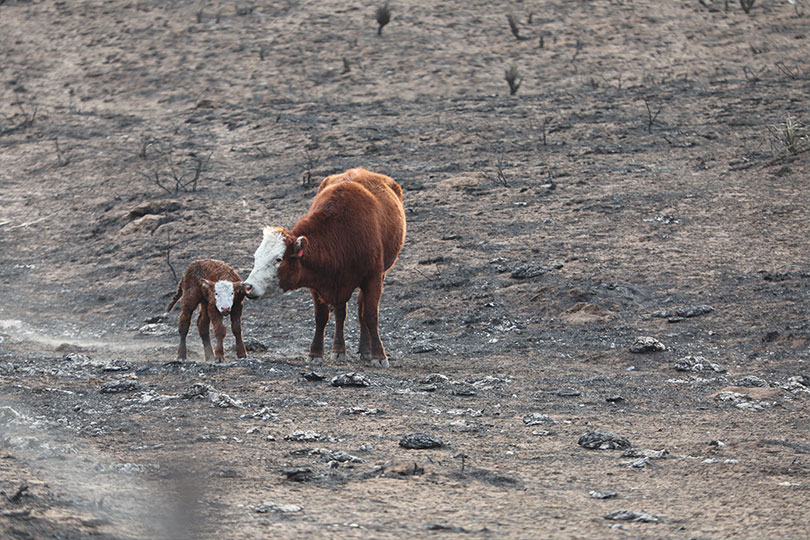By Shelby Shank
Field Editor
Recent wildfires in the Panhandle have caused significant cattle losses for ranchers but are not expected to impact overall cattle and beef prices.
The Smokehouse Creek Fire, the largest fire in state history, burned more than 1 million acres across Texas and Oklahoma.
The Panhandle is home to 85% of state’s beef cattle herd, but experts believe the impact of the wildfires will be localized and not affect the overall Texas or U.S. cattle market. While it will take weeks to estimate the exact number of cattle lost, experts stress losses will mainly affect individual ranchers.
According to the 2023 U.S. Department of Agriculture’s (USDA)county-by-county inventory report, there were 17,000 beef cattle in Hemphill County, where the fire hit the hardest. In Gonzalez County, near San Antonio, there are 54,000 head of beef cattle.
“I’ve been getting a lot of questions about whether this fire would impact cattle prices and consumers, but the short answer is, no,” Dr. David Anderson, AgriLife Extension economist, said. “I think some people were under the impression there could be a significant percentage of the Texas herd lost, but that is not the case. It’s devastating if your ranch and your herd is in the disaster area, but it won’t really impact cattle or beef prices because of the numbers and scale of the entire market.”
Cattle prices have been trending upward and setting all-time records. Anderson expects that trend to continue into 2025 as the drought’s impact contributes to a smaller herd in the U.S. and Texas.
Spring calving season is underway, and the wildfires have abruptly erased the value of productive cows and the future value of any lost calves for Panhandle ranchers.
“This was a year to make up for a heck of a lot of drought, and the cost of holding on through drought,” Anderson said. “I think there was some optimism with conditions improving and record high prices. It’s just terrible for producers who lost productive cows and potential record prices for spring calves.”
Rebuilding the cattle herd amid record-high prices will be challenging. The beef cattle herd in Texas is the smallest—4.1 million head—since 2014. The nation’s beef cow herd has fallen by 2% since last year to 28.2 million head, according to the USDA cattle inventory report.
“Restocking is difficult when prices are high, and so far, we’re looking at slower expansion of the Texas herd,” Anderson said. “Losing animals at a time like this is a terrible blow, but we’re still expecting even higher prices in 2025 and beyond.”
Infrastructure losses, including fencing, structures, hay stocks and equipment will vary for individual ranchers. Fencing alone costs $3 per foot to replace, and the total miles of fence lost in the wildfires are expected to be substantial.
Texans work together to support fellow Texans, as well as those in nearby states shipping hay and other needed supplies to help ranchers affected by the fires.


Leave A Comment